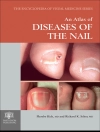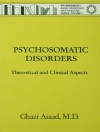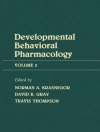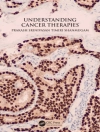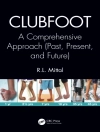Genitourinary Radiology: Kidney, Bladder and Urethra: The Pathologic Basis is the first volume in a set of books on the pathologic basis of genitourinary radiology.
Genitourinary Radiology: Kidney, Bladder and Urethra: The Pathologic Basis provides a lavishly illustrated guide to the radiologic and pathologic features of a broad spectrum of genitourinary diseases of the urinary tract, including the entities most commonly encountered in day to day practice. The editors are authorities in the fields of genitourinary radiology and pathology, and the authors of each chapter are renowned radiologists, with pathology content
provided by an internationally recognized genitourinary pathologist. General, plain film, intravenous pyelography, ultrasound, computed tomography, magnetic resonance imaging, nuclear medicine imaging and PET imaging of each disease entity are included. Accompanying the majority of the radiological narratives are complementary descriptions of the gross and microscopic features of the disease entities.
Genitourinary Radiology: Kidney, Bladder and Urethra: The Pathologic Basis is aimed at radiologists in private and academic practice, radiology residents, urologists, urology trainees, pathology trainees and fellows specializing in genitourinary pathology. Both experts and beginners can use this excellent reference book to enhance their skills in the fields of genitourinary radiology and pathology.
Table des matières
Renal Neoplasms.- Inflammatory Conditions of the Kidney.- Cystic Diseases of the Kidney.- Renal Calculus Disease.- Vascular Disorders of the Kidney.- Medical Renal Disease and Transplantation Considerations.- Non-Neoplastic Disorders of the Renal Pelvis and Ureter.- Neoplasms of the Renal Pelvis and Ureter.- Renal and Ureteral Trauma.- Non-Neoplastic Disorders of the Bladder.- Neoplasms of the Bladder.- Bladder Trauma.- Congenital and Acquired Nonneoplastic Disorders of Urethra.- Neoplasms of the Urethra.
A propos de l’auteur
Dr. Vikram S. Dogra is currently Professor of Radiology and Urology at the University of Rochester New York. He is fellow of the European Society of Urogenital Radiology and fellow of the Society of Uroradiology. He has taught and trained hundreds of radiology residents and trained many fellows in radiology from Egypt, India, China, Sri Lanka, Mexico, Turkey and Israel. Dr. Dogra has 7 books of Radiology to his credit. Dr. Dogra is also current chair of the continuous professional improvement – Genito Urinary module subcommittee of the American College of Radiology.
Dr. Gregory T. Mac Lennan earned his M.D. degree from the University of Manitoba, Canada, in 1971. He spent six years training in General Surgery and Urology at Manitoba Affiliated Teaching Hospitals, and followed this with a fellowship in Urodynamics at St. Peter’s Hospitals, London, England. From 1978 until 1989, Dr. Mac Lennan practiced Urology in Grand Forks, N.D. and progressed from Clinical Instructor to Associate Professor of Surgery at the University of North Dakota School of Medicine. In 1989, he returned to Manitoba Affiliated Teaching Hospitals and spent 5 years in Residency and fellowship training in Anatomic Pathology and Cytopathology. In 1994 he began a Fellowship in Surgical and Genitourinary Pathology at Mayo Clinic, Rochester, MN. Following his Fellowship, he joined the staff of the Department of Pathology at Case Western Reserve University in Cleveland, Ohio, in 1995. Dr. Mac Lennan is Board certified in both Urology and Anatomic Pathology in both Canada and the United States. Additionally, he is Board certified in Cytopathology. Dr. Mac Lennan is Professor of Pathology at Case Western Reserve School of Medicine, with secondary appointments in Urology and Oncology. He is the Division Chief of Anatomic Pathology, the Director of the Human Tissue Procurement Facility at University Hospitals of Cleveland, and Director of the Tissue Procurement and Histology Core Facility of the Seidman Cancer Center. Dr. Mac Lennan has a particular interest in genitourinary pathology. Much of his time is committed to diagnostic surgical pathology and cytopathology. His research has been predominantly clinically oriented, in collaboration with urologists, oncologists and other pathologists, but has also involved collaborations with basic scientists.



